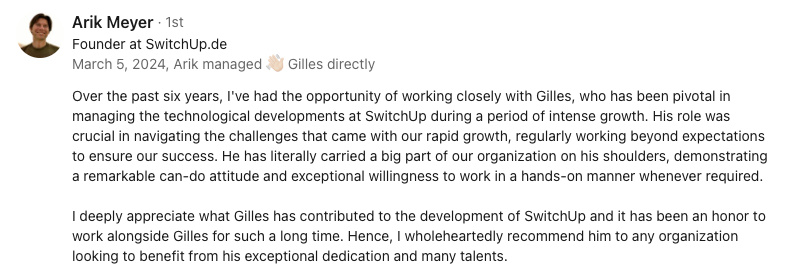Abstract:
This article explores how fintech platforms are transforming access to credit for independent tech professionals, such as freelancers and small business owners, who have traditionally struggled with conventional banks due to inconsistent income and lack of standard financial records. By leveraging alternative data—like digital wallet payments and SaaS revenues—fintech lenders now offer credit options embedded directly into everyday tools, making processes like buy-now-pay-later, invoice factoring, and revenue-based microloans faster and more accessible. The article weaves in real-world examples, such as a SaaS founder using revenue-based financing on Pipe for marketing growth, developers bridging cash gaps with invoice factoring, and consultants launching projects with BNPL tools, highlighting both the benefits and pitfalls of these new credit forms. It emphasizes the value of simplicity, transparency, and integration for tech minimalists, offering practical checklists for choosing tools and advice on maintaining autonomy and financial health. The piece also underscores the importance of peer communities—like Reddit and Indie Hackers—for honest feedback, cautioning readers to remain vigilant about fees, privacy, and platform reliability. Ultimately, the article presents fintech credit as an empowering, flexible solution for tech professionals, provided they stay disciplined, informed, and connected to their peers as the landscape continues to evolve.
Getting credit used to be a real headache for independent tech professionals like me—especially as a freelancer or small business owner with unpredictable income. Traditional banks often say no, leaving many of us without the working capital needed to grow, launch a new product, or just bridge those slow summer months. For example, I’ve seen plenty of tech freelancers use short-term credit to fund a €5k product launch or simply to keep things afloat when client payments lag. But things are changing. Fintech platforms are making credit more accessible, using new types of data and technology to better match the way we actually work.
I want to share how fintech credit is breaking down old barriers. Credit is now built right into the tools we use every day, making the process faster and less painful. I’ll break down the main types of alternative credit—like buy-now-pay-later, invoice factoring, and revenue-based microloans—with practical examples from my own workdays and those of my peers.
Risks and tradeoffs are real, too. I’ll give you tips on what to watch out for, from sneaky fees and privacy issues to keeping your finances healthy. I’ve had my own share of messes when I ignored the fine print or got lured by simplicity. At the end, I’ll share my minimalist way to pick credit tools and advice for staying independent and avoiding unnecessary complexity.
If you want to know how fintech is changing things for indie tech pros—and how to use these tools wisely—read on. Here’s how fintech credit fits into a simple, low-stress financial kit.
The rise of fintech credit
Fintech platforms open new doors
Fintech lenders have changed how credit decisions are made, especially for those of us who don’t have a standard credit history. Instead of only looking at credit scores and bank statements, these platforms use data like PayPal income, SaaS subscriptions, or e-commerce sales. I remember when I co-founded a cross-border e-commerce platform in Shanghai—our revenue was all over the place, but fintech lenders actually looked at our Stripe and PayPal flows, not just a dusty credit report. Suddenly, we could get a loan even without a credit card. This shift means more tech professionals get access to credit, and the process is much faster. Using alternative data has helped close the gap for many who banks once ignored.
Credit built into daily workflows
Getting credit has become a lot simpler. With digital onboarding and embedded finance, it’s now possible to apply for and receive credit right inside the platforms we use daily—like invoicing software or SaaS dashboards. For example, I’ve sent an invoice and, with just a few clicks, gotten a line of credit instantly. No more paperwork mountains or endless waiting. Credit becomes part of everyday business, with much less hassle. Sometimes, I almost forget I’m borrowing at all—until the bill comes, of course.
More access for solo and small tech businesses
These changes have made credit more accessible for solo tech professionals, gig workers, and tiny businesses. More people can get the funding needed to keep things going or to grow, without the usual hoops of traditional banks. As fintech credit spreads, the reasons for using these tools keep changing, and I see more folks getting involved and succeeding in the tech economy.
Why indie tech pros choose alternative credit
Banks often say no
I’ve been there—walking into a bank with a solid business plan and a pile of invoices, only to get rejected because my income was “too irregular.” Many freelancers and tech pros face the same thing. Banks want stable, predictable income and lots of paperwork, which doesn’t match freelance reality. If you have steady work but uneven monthly income, banks usually say no. That’s where fintech credit tools fit our special needs much better.
Fintech credit fits minimalist values
Fintech credit products are built with the needs of tech minimalists and freelancers in mind. Some features I appreciate:
- Quick applications and fast approvals
- Flexible repayment terms for unpredictable income
- Offers like revenue-based loans or buy-now-pay-later for SaaS
- Clear, simple user interfaces
These features support autonomy and keep things simple, letting us focus on work instead of paperwork. I love when a tool just works, no fuss.
Simplicity and transparency matter
As someone who values minimalism, I want tools that are easy to set up, have clear terms, and integrate smoothly with my other systems. Old finance tools tend to be confusing, but fintech products are moving toward more transparency. For those looking to avoid hassle and confusion, these new credit options make sense. The main question is, which types are best? Let’s look at that next.
Flexible credit options
Buy-now-pay-later (BNPL) helps tech professionals manage expenses better. You can get key software or hardware now and pay over time, which helps balance cash flow without extra debt. I’ve used BNPL for a critical development tool, keeping cash available for other needs until clients paid. This flexibility suits project-based income, and many freelancers use it.
Invoice factoring is another useful option. Platforms like Fundbox and BlueVine let tech pros get paid quickly for invoices that would otherwise take weeks or months to clear. When I was running my science popularization company, waiting 60 days for a big client to pay was brutal—factoring meant I got most of that money up front, which kept the lights on and the team paid.
Microloans are helpful for those with irregular revenue. Revenue-based loans from services such as Stripe Capital and Shopify Capital let repayments adjust with business income: pay less during slow times and more when things are busy. This flexible repayment is less stressful than fixed monthly bills.
Other digital microcredit options such as Kabbage and OnDeck also give quick access to cash, with online applications and fast decisions. Perfect for freelancers who need fast funding or want to avoid long bank visits and stacks of documents.
How do tech professionals actually use these tools? Everyday situations show their real value.
When and how tech pros use credit
Bridging cash flow and making essential purchases
During slow periods or between projects, BNPL and microloans help fill income gaps. These tools let us keep up with expenses or buy needed equipment before client payments arrive. After moving to Lisbon, I faced the anxiety of unpredictable income as a freelancer. Using BNPL for essential software helped me stay focused on work instead of worrying about bills.
Invoice factoring solves the headache of slow client payments. It’s often used to unlock cash tied up in big invoices, so freelancers can pay suppliers, employees, or start new projects without waiting ages to get paid. I’ve factored invoices to keep my business moving when payments were delayed.
Revenue-based loans work well for growth or new launches. A few examples:
- Funding a marketing push
- Hiring more help for a big contract
- Covering sudden expenses during busy times
The trick is to balance the positives and negatives. Each tool is best used for the right business situation and picked with care.
Responsible use of fintech credit
Cost, speed, and approval in real life
Fintech lenders are known for how quickly they work. While banks might take weeks to decide, fintech platforms often approve and release money in just a few days. When I was leading a Berlin scale-up, waiting weeks for bank approval was not an option. Fintech platforms gave us a decision in days, which made all the difference during a tight project deadline. If only banks worked as fast as my morning espresso machine, life would be much easier for indie tech pros.
Here’s a quick comparison:
- Approval speed: Fintech (1–3 days) vs. banks (2–5 weeks)
- Approval rates: Fintech (45–60 percent) vs. banks (30–47 percent)
- Accessibility: Fintech accepts variable income and requires little collateral
But with this speed, there’s often a higher price. Fintech loans usually have higher fees and interest rates than banks. While banks might offer interest rates as low as 4 to 13 percent, fintech can range from 15 to 60 percent or more. In my experience, the convenience of fintech credit often outweighs the higher fees, especially when time is tight.
Even though fintech approves more applicants (especially those with irregular income or low collateral), it’s smart to think carefully about fees and total cost. Not everything is easy—there are risks to watch for.
Hidden risks and staying safe
Alternative credit tools come with their own risks, like:
- High or unclear fees: Sometimes costs are hard to find or surprises pop up later
- Aggressive collections: Some lenders are extra strict or even predatory when collecting late payments
- Weak regulation: Not all fintechs are as closely regulated as banks
Data privacy is another concern. These lenders may collect a lot of business and personal info for loans—which can be risky if their data handling isn’t solid.
To lower risk, I use checklists and ask peers for reviews before signing up. Checking for clear prices, reading feedback, and checking data privacy policies all help avoid mistakes.
Favoring platforms with upfront terms, good customer support, and strong policies is wise. Using a simple checklist can help: Are the fees out in the open? How fast is support? What do people online say about the platform?
Bringing these tools into a simple system means being disciplined:
- Use only a few credit tools to avoid getting lost in complexity
- Set up automatic payments to avoid missing due dates
- Review terms regularly to catch any sneaky changes or added charges
Keeping things tidy and checking often helps me stay organized and avoid trouble. Now, let’s see how this works in practice.
Real-world stories from my journey
How fintech credit made a difference
When I co-founded a cross-border e-commerce platform in Shanghai, managing cash flow between product launches was a real challenge. Using revenue-based microloans helped us bridge the gap without giving up equity. It was a relief not to have to pitch to investors or wait for slow-moving banks.
Invoice factoring has been a lifeline when waiting on slow clients. Running my science popularization company, I once factored a large invoice to pay for daily expenses and keep payroll going during a long wait for payment. That kept the business stable even when cash flow was uneven.
BNPL tools also helped me get started as a freelancer in Lisbon. I used BNPL on platforms like Brex to access software before the cash started rolling in. It meant I could launch quicker and stay flexible without waiting for client money. The stress of not knowing if I could afford the next month’s tools was gone—at least for a while.
What works and what to watch
Good results with fintech credit usually come from matching the right product with the right problem. For example:
- Use invoice factoring to fix cash flow gaps from slow clients
- Use BNPL for must-have purchases when money’s tight
- Pick revenue-based loans to ramp up marketing or business operations without losing ownership
It’s key to check all costs and details. I’ve learned (sometimes the hard way) to pay close attention to fees, payment schedules, and how trustworthy a platform is. Peer discussions are gold for honest feedback before jumping in.
Ignoring details can cause headaches. I’ve let multiple loans tangle up my financial routine before, and trust me, it leads to more stress and confusion. A simple, transparent review system helps avoid most problems, keeping finances neat and stress down.
A minimalist framework for picking credit tools
My checklist for the right tool
To avoid juggling too many accounts, I use a three-point approach—something I picked up managing a multicultural team in Beijing:
1. Start with simplicity—pick tools with a clean interface and fast setup
2. Insist on clarity—terms, fees, and data policies should be clear
3. Make sure the tool works with your current systems—no extra work
These three points keep things lean and easy to track.
Looking ahead is also important. The “One In, One Out” rule helps: when you add a new credit tool, drop an old one. This keeps your setup simple and avoids a maze of forgotten accounts.
If possible, choose platforms with open standards and easy data transfer. This way, you can switch tools more smoothly as your needs change, keeping your business flexible.
Staying autonomous and avoiding dependency
Autonomy starts with strong personal systems. Here’s what works for me:
- Keep an emergency fund for the unexpected
- Mix income sources, so you don’t depend on just one
- Separate business and personal accounts for clarity
Automation helps by reducing shortfalls. If savings and taxes are set aside automatically, there’s less risk of overspending or last-minute surprises.
Sometimes, I just prefer to keep things simple, you know, less is more. Checking my system every so often keeps things tidy. I review current credit tools and close accounts I don’t use. This keeps my finances simple and my focus sharp. Fintech will keep changing, but a minimalist, steady approach will always be a smart move.
Looking ahead for fintech credit
Instant, personalized credit and new opportunities
Fintech innovation is moving quickly. New credit options are being built right into the apps and platforms we already use. Real-time credit checks are starting to appear, meaning you can get a loan based on your most recent business data. Working capital could soon be available anywhere, whenever it’s needed, with terms that fit your business size and style. For independent tech pros, this could mean even more flexibility and speed.
But these advances also bring new worries, especially around how much data is collected and for what reasons. As options grow, watch what information you’re sharing and who sees it.
More personalization, more integration, more vigilance
As fintech tools get smarter, offers will become more tailored and fit better with daily routines. This is handy but does bring more privacy questions as platforms track more about how you work and spend.
Online communities will become even more useful for catching problems early and sharing tips as the amount of choice keeps growing.
Community and peer vetting
Where I turn for real feedback
With so many credit products around, forums and peer reviews are crucial for tech pros. Reddit, Indie Hackers, and Product Hunt are my favorite sources for honest opinions. These communities point out hidden fees, flag bad support, and help users find out which platforms actually work as promised.
- Reddit: Lots of fintech discussions, sharing both good and bad experiences
- Indie Hackers: Stories and input from founders and freelancers
- Product Hunt: First looks and feedback on new fintech launches
Peer reviews can catch problems that official reviews and marketing never mention, making it easier to spot trouble or new, useful tools.
Staying connected for safer, smarter choices
Peer groups are about more than just product picks—they help users avoid trouble like poor support or tough collections, which you might miss from ads or basic research. First-hand user stories are a powerful way to learn what really happens after signup.
As new tools come to market, staying active in these groups helps me keep up, spot good opportunities quickly, and avoid pitfalls.
Fintech credit has made it much easier for independent tech professionals like me to get the funding we need, with less complexity and more flexibility than banks. By keeping things simple, clear, and easy to connect, these tools help freelancers and tech businesses avoid old frustrations. Every tool has some risk, though. Checking fees, reading community feedback, and not adding more than you need gives long-term peace of mind. The benefit? More freedom—to work, handle business ups and downs, and grow without getting stuck. As fintech keeps evolving, staying curious and connected with your peers will help you find the best options and steer clear of problems.














